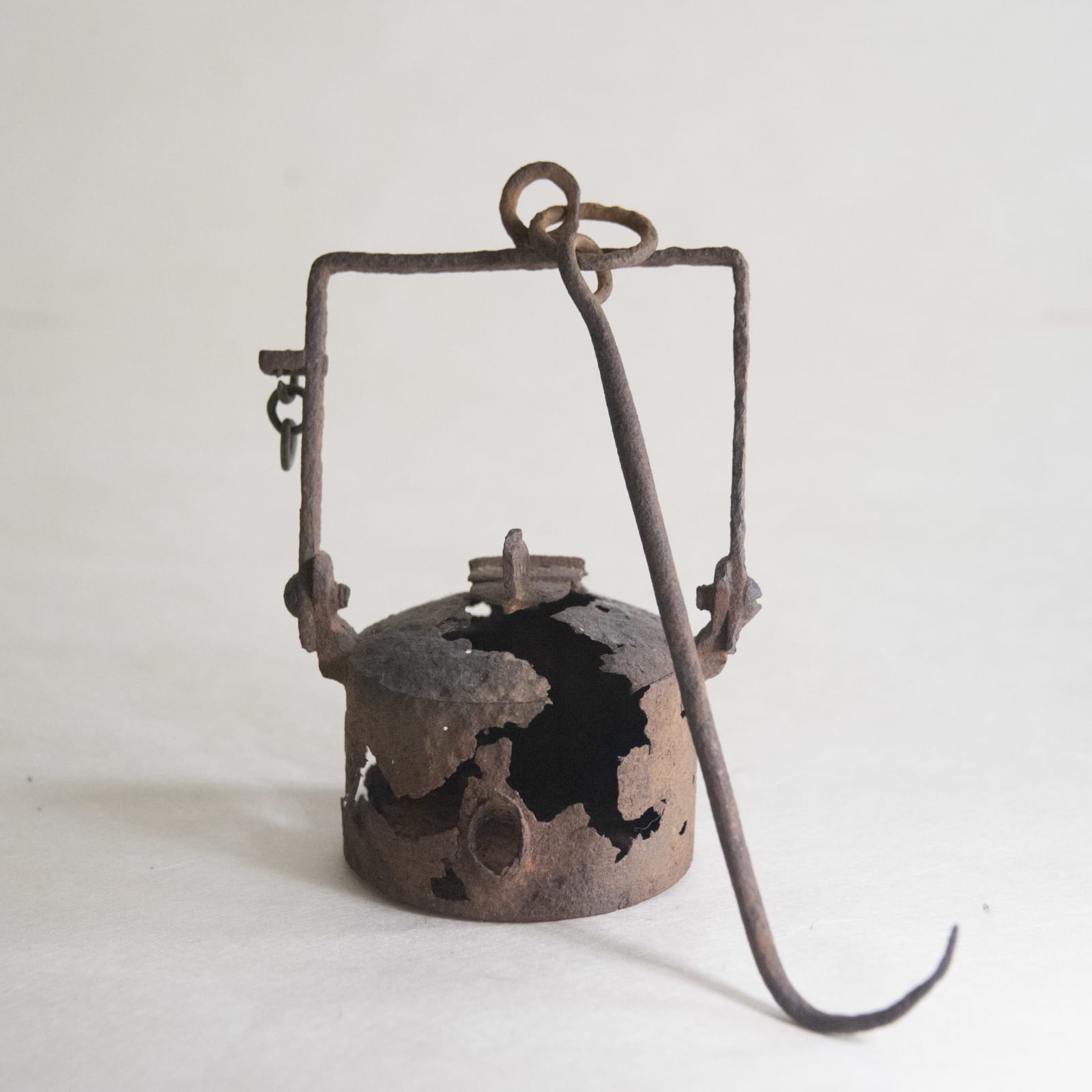


artisan's name unknown
iron oil lamp, turn of the 1900s
5'' h x 8'' w x 3'' diameter
Further images
Divorced from the suggestions of context or use, the old and weathered surface of this metal object provokes strange fascination. Its hinges, once mobile, are now rusted to stasis, and...
Divorced from the suggestions of context or use, the old and weathered surface of this metal object provokes strange fascination. Its hinges, once mobile, are now rusted to stasis, and its main body is riddled with the expanding gaps from erosion. With age, it has become delicate and poetically sculptural, plucked from the passage of decay by a thoughtful eye able to recognize its precarious state of beauty.
The object is an oil lamp from the turn of the 1900s, although its irreparable damage has rendered it no longer functional as such. Instead, it has traveled an unlikely path to beauty, the kind not instilled by the intention of an artist nor the hand of a craftsman, but rather through the uncontrollable passage of time. It embodies the essence of the Wabi aesthetic, which cannot by its nature be created by human intention, but can only be found in an object by a discerning observer. Perhaps, had he been alive to happen upon it, a tea master like Rikyū would have also noticed the beauty of Wabi in this object, and recognizing its potential, used it as a vase for a single white camellia during tea.
If this object may be considered in the realm of art, perhaps its medium is time. Only through time could the seed of wabi implanted in this oil lamp’s original form come to fruition in its current state. And it is time, through its quiet repose, that allows our eyes to relax upon this humble object and contemplate its long path to beauty.
The object is an oil lamp from the turn of the 1900s, although its irreparable damage has rendered it no longer functional as such. Instead, it has traveled an unlikely path to beauty, the kind not instilled by the intention of an artist nor the hand of a craftsman, but rather through the uncontrollable passage of time. It embodies the essence of the Wabi aesthetic, which cannot by its nature be created by human intention, but can only be found in an object by a discerning observer. Perhaps, had he been alive to happen upon it, a tea master like Rikyū would have also noticed the beauty of Wabi in this object, and recognizing its potential, used it as a vase for a single white camellia during tea.
If this object may be considered in the realm of art, perhaps its medium is time. Only through time could the seed of wabi implanted in this oil lamp’s original form come to fruition in its current state. And it is time, through its quiet repose, that allows our eyes to relax upon this humble object and contemplate its long path to beauty.
Signup for our Newsletter
You will receive two emails a month from us. One introduces artworks and design works from Kyoto's hidden sources and the other is stories from Misako, sharing insights into Japanese culture.
* denotes required fields
为了回应您的查询,我们将根据我们的隐私政策处理您提供的个人数据。


